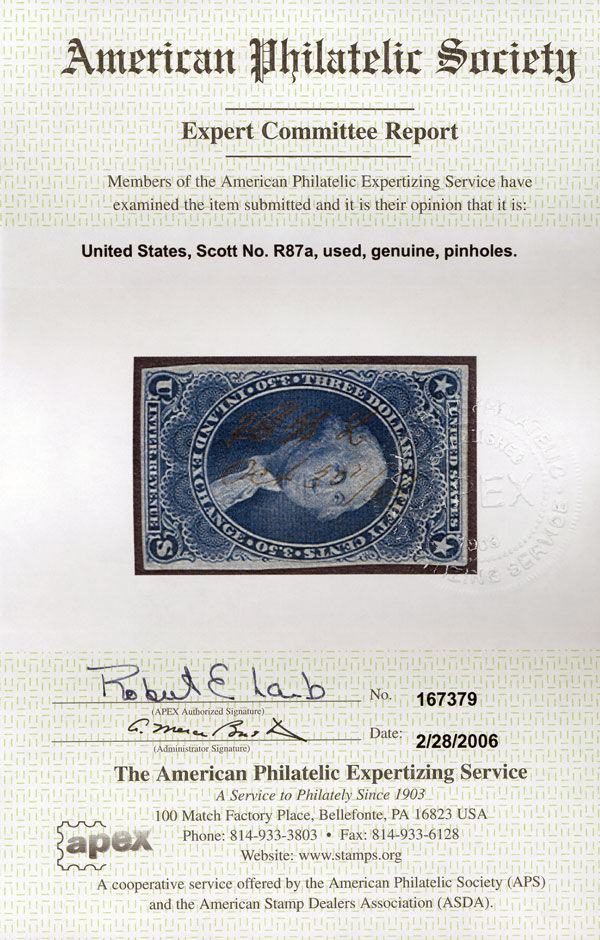New arrival!
in Stamps Forum
Woohoo! Filling in another tough space in my collection of 1st Issue U.S. Revenues.
R87a. The only reason I could even begin to afford it is that the manuscript cancellation has resulted in 5 small pinholes. The nice thing is that they aren't noticable unless you hold the stamp up to the light, so the stamp retains a very nice aesthetic appearance. A sound copy would have set me back several thousand, as the current Scott value is $6,500. Including expertization, I'm into the stamp for roughly 7% of catalogue value, which is quite reasonable for a stamp this scarce.


R87a. The only reason I could even begin to afford it is that the manuscript cancellation has resulted in 5 small pinholes. The nice thing is that they aren't noticable unless you hold the stamp up to the light, so the stamp retains a very nice aesthetic appearance. A sound copy would have set me back several thousand, as the current Scott value is $6,500. Including expertization, I'm into the stamp for roughly 7% of catalogue value, which is quite reasonable for a stamp this scarce.


0

Comments
Nice looking revenue. Isn't it amazing how much a fault can decrease the value?
Got a Persian Carpet? or any Inverts?
<< <i>Got a Persian Carpet? or any Inverts? >>
No, not yet, although I haven't really devoted nearly the effort to 2nd and 3rd series that I have to the 1st...
1/2 Cents
U.S. Revenue Stamps
Jerry
Jerry